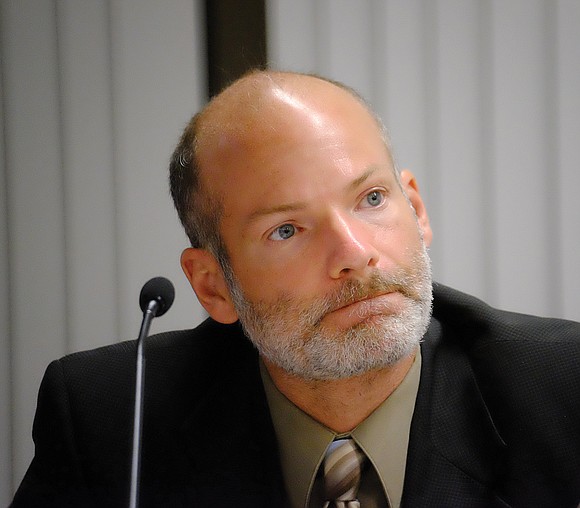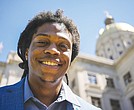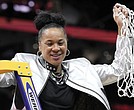Overcharged? 4 Richmond School Board members question surging costs to build new schools in city
Jeremy M. Lazarus | 3/29/2019, 6 a.m.
The projected cost of the three new schools that Richmond is preparing to build has jumped an average of $107 per square foot in just five months, adding tens of millions of dollars to the cost, according to four members of the Richmond School Board.
Now those members of the board are asking the city to explain why the cost has ballooned so suddenly, turning the new buildings into some of the most expensive in the state and eliminating an opportunity to build an additional elementary school.
The board members are requesting that the city advise them of “any measures that can be taken to bring the planned construction costs” more in line with the construction costs being paid by most other school districts in Virginia.
The concerns were expressed in a letter sent Wednesday to city officials. It bears the signatures of School Board members Kenya Gibson, 3rd District; Jonathan Young, 4th District; Dr. Patrick Sapini, 5th District; and Felicia Cosby, 6th District.
The Free Press obtained a copy of the letter.
It was sent to the city’s procurement director, Betty Burrell, and Robert Stone, a city engineer involved in overseeing development of the new school buildings to replace E.S.H. Greene and George Mason Elementary schools and Elkhardt-Thompson Middle School. Copies of the letter also were sent to members of City Council, as well as the city’s chief administrative officer, Selena Cuffee-Glenn.
The letter follows up on a Free Press story in the March 21-23 edition that reported that the three schools are projected to cost $140 million, based on information provided to the council. That is $30 million more than the $110 million that Richmond Public Schools officials had projected they would cost.
The new schools are being financed with $150 million the city plans to borrow and repay using proceeds from a 1.5 percent increase in the meals tax that was approved last year.
When the Free Press asked about the multimillion-dollar discrepancy between the School Board’s projection of spending $110 million for the schools and the $140 million that the city is projecting, Angela Fountain, a spokesperson for the Department of Public Works, responded, “City administration does not have any details related to RPS estimates.”
In the letter, the four School Board members note that the design firm, RRMM Architects of Norfolk, informed the School Board on Sept. 4 that the cost of the new middle school was projected at $182.48 a square foot. However, a new city report projects a $90 increase in the per square foot cost.
“When this design was built in Suffolk, it was the least expensive middle school project built (in Virginia) that year,” the letter states. “Please clarify why actual construction costs are $272.44 (a square foot), substantially higher than the state average.”
Suffolk is where CAO Cuffee-Glenn previously worked as city manager.
The current $272.44 figure comes from information city officials provided to City Council last week.
While the letter does not say so, the $90 increase means the city would spend $16.8 million more than Suffolk did to construct the same school.
The letter also notes that RRMM estimated construction costs for the new Greene and George Mason elementary schools “to be $178.90 per square foot. When that design was built in Suffolk, it was among the least expensive elementary projects (in Virginia) that year.
“Please clarify why actual construction costs are $295.89 per square foot (for Greene) and $294.08 per square foot” for Mason, the letter continues.
That is $116 to $117 more expensive per square foot, meaning Richmond will spend an extra $13 million to build Greene and an extra $11 million to build Mason, based on those figures.
Some of the difference can be attributed to the fact the general contractors will be doing the site work and installing new utility lines and demolishing the old Greene and George Mason buildings once the new buildings are in place. However, people in the field say that the city would spend only a few million dollars for that work, not enough the explain the entire increase in construction costs.
By paying large amounts for the three schools, the School Board members noted that RPS is being denied an opportunity to build an additional new school.
“Put another way, the overage could cost 700 students the opportunity of being taught in a safe, modern facility in the near future,” the letter states.
“It is critical that we identify what is driving these excessive costs,” the letter states in requesting more detailed information.
Among the things that has caught the eye of the board members is the fact that Richmond plans to spend the same amount for architectural services and construction management as it did in building the new Broad Rock and Oak Grove-Bellemeade Elementary schools and the new Martin Luther King Jr. Middle School a few years ago.
The letter notes that the School Board was told that “we could maximize limited funding” by using existing school designs rather than having custom school designs.
However, the city information on the cost of schools shows that no money was saved using that process.
For example, the city has disclosed that RRMM Architects plans to charge the city $4.19 million for designing the replacement for Elkhardt-Thompson and managing the construction.
That compares with the $2.83 million the city paid an architecture firm for designing and managing the development of Martin Luther King Jr. Middle, which was custom-designed.
The city is planning to pay RRMM $2.35 million for the design and management work for Greene, or a higher price than it paid architects for similar services for Broad Rock and Oak Grove-Bellemeade. The city paid $1.7 million and $1.87 million, respectively, to architects for custom-designed schools.
At the end of the letter, the School Board members make a final plea: “Towards our shared goal to make the best use of taxpayer dollars and meet the essential needs of our city’s students, please advise if there are any measures that can be taken to bring the planned construction costs in line with standard fees.”










